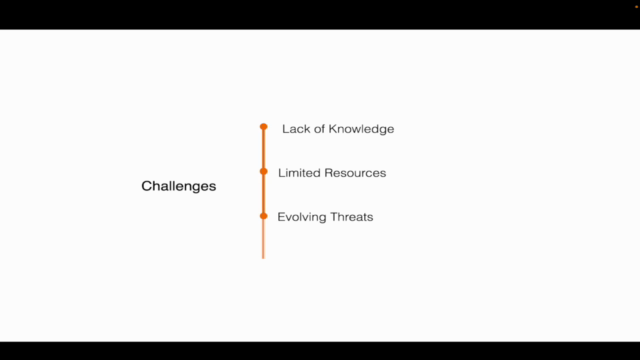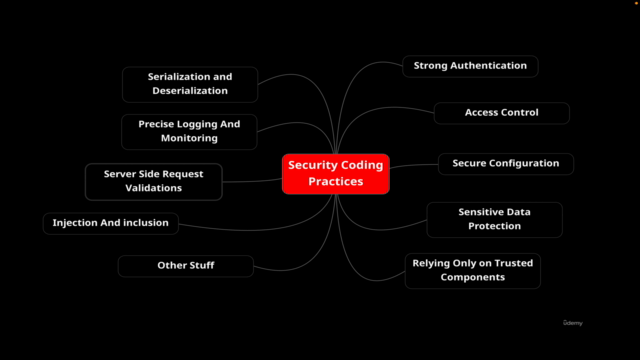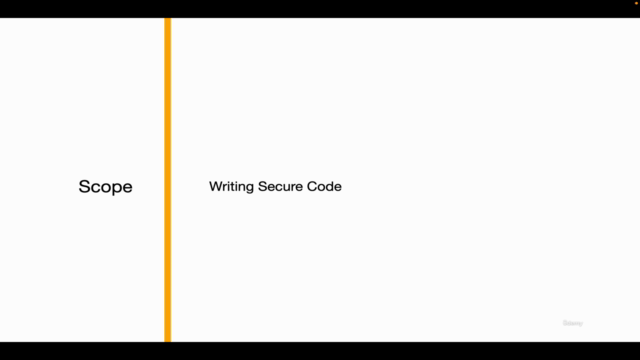Secure Coding and Design Best Practices in Java

Why take this course?
🛡️ Secure Coding in Java with Design Principles and Practice - Your Gateway to PCI-DSS Compliance
Course Overview:
Welcome to our comprehensive course on "Secure Coding in Java with Design Principles and Practice"! This course is designed to equip you with the knowledge and skills necessary to write secure, robust, and compliant Java applications. By adhering to best practices in secure coding and design principles, you'll be able to protect your software from a wide range of security threats, including hacking attempts, data leaks, and system vulnerabilities.
What You'll Learn:
1. OnBoarding:
- Understanding the importance of secure coding in the current digital landscape.
- An overview of the course structure and what to expect throughout the program.
2. Introduction to Secure Coding:
- The fundamentals of secure coding practices.
- How secure coding principles apply to Java programming.
- The role of secure coding in building trust and maintaining user privacy.
3. Secure Design Principles:
- Design patterns that enhance application security.
- Security considerations during the design phase.
- How to integrate security into your development lifecycle from day one.
4. Understanding the Risks:
- Identifying common security vulnerabilities in Java applications.
- Learning about the most prevalent threats, such as SQL injection, cross-site scripting (XSS), and buffer overflows.
- Strategies to mitigate these risks effectively.
5. Security Management:
- Implementing secure coding standards throughout the software development process.
- Tools and techniques for code analysis and vulnerability scanning.
- Best practices for application deployment, maintenance, and monitoring.
6. Summary:
- Recapping the key takeaways from each module.
- The importance of continuous learning in the field of cybersecurity.
7. Appendix:
- Additional resources for further study.
- Glossary of terms used throughout the course.
Why Secure Coding?
Secure coding is crucial because it's the foundation upon which the security of your application is built. It's not just about fixing vulnerabilities after they are discovered; it's about preventing them from being introduced in the first place. By following industry-standard secure coding guidelines, you can significantly reduce the risk of data breaches and system compromises.
Course Highlights:
-
Understanding Vulnerabilities: Learn about common security threats and how to defend against them in your Java applications.
-
Practical Examples: Engage with real-world scenarios and examples that illustrate the principles of secure coding and design practices.
-
Regulatory Compliance: Understand how secure coding aligns with regulatory standards like PCI-DSS, and what it means for your business.
-
Resource Efficiency: Learn how to integrate security measures without overburdening your development team or slowing down the development process.
-
Staying Current: Keep abreast of the latest security trends and threats, ensuring your applications remain protected against evolving risks.
Who Should Take This Course?
This course is ideal for:
-
Beginner to Intermediate Java Developers: If you've got some experience with Java but want to elevate your understanding of secure coding practices.
-
Software Architects and Designers: To incorporate security considerations from the ground up in your software architecture.
-
Project Managers and Team Leaders: To understand the importance of secure coding for project success and compliance needs.
-
Security Professionals: To expand your knowledge of Java-specific secure coding practices.
Ready to Master Secure Coding in Java?
Enroll now and embark on a journey to transform your Java applications into secure, resilient systems that can stand up against the most sophisticated cyber threats. With our expertly crafted course, you'll be well-equipped to ensure compliance with security standards like PCI-DSS, safeguard sensitive data, and protect your users from the dangers lurking on the internet. Let's secure our code, together! 🛡️💪
Course Gallery




Loading charts...